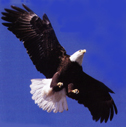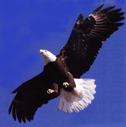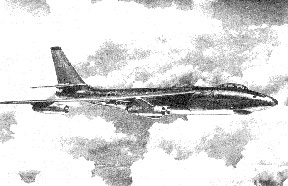|
The Soviet Franz Josef LandOverflight by Page 1 of 2 Pages |
|||||||||
 |
 |
||||||||
| On 12 August 1952, President Truman, acting upon the recommendation of the JCS, the Secretary of Defense and CIA, based upon the concurrence of the State Department, approved an RB-47E overflight of the Soviet Wrangel Island and the Chektoski Peninsula. (Mission was flown by Donald E. Hillman, on 15 October 1952) It is believed with certainty, that President Truman within the same time frame, also approved our overflight of the Soviet Franz Josef Land Archipelago. |
|||||||||
 |
|||||||||
|
|
|||||||||
|
The next day, on 13 August, 1952, Headquarters 55th SRW directed that the 38th Reconnaissance Squadron provide an aircraft and crew for a special, top secret, photographic and electronic reconnaissance mission to be flown from the Thule Air Base in Greenland. Our Squadron Commander asked me if I and my crew would volunteer for the assignment. However, what do you say. To us this was the most logical choice the C.O. could make. We were a complete crew that had flown together for quite some time, including responsibility for single aircraft overseas assignments. We had been assigned the same aircraft for the past three years, an RB-50E, and had named it, ?High and Lonesome?. We were fully confident of our aircraft and the professional experience and abilities of the crew. — So it was really a “go” situation.
The next several days were busy ones, because the families of the crew had to be assisted in their preparation for the move back to the states. The crew devoted much of the available time to preparing the aircraft. Systems were checked, engines were stripped down and evaluated for discrepancies and run up. The two racks of electronic countermeassures equipment were operationally checked along with the radio equipment. Guns were cleaned, turrents operated, and fully loaded with 6,000 rounds of 50 caliber ammunition. The cameras were inspected, checked for operation and film magazines loaded. The camera installation included three cameras with 6-inch focal length in a trimet setup for photo mapping, a four camera multi-station installation with 36 inch focal length cameras, in two mounts, capable of high resolution target acquisition, an oblique camera, and a 12 inch focal length camera in a stabilized vertical mount. Our survival equipment, personal equipment, etc., would be loaded last. On 28 August we were confident that our aircraft was ready for the project. Two days later we received our temporary duty orders, 55th Strategic Reconnaissance Wing LO # 52-509, dated 29 August. The orders did not specify a destination or a purpose. I received verbal orders to report with our aircrew to Headquarters Second Air Force at Barksdale, Air Force Base, Louisiana, for a briefing by Strategic Air Command intelligence officials. The aircrew members, the squadron intelligence officer, Major Bernard Zimmerman, and our crew chief would proceed there on our aircraft. A team of fourteen maintenance support specialists, with our flyaway spare parts kit would follow on a C-97 Miliary Transport Service Aircraft. With our temporary duty orders in hand, we departed Ramey Air Force Base on 1 September. We made a nighttime flight to Barksdale Air Force Base to receive our briefing for the mission. After getting some rest, we contacted the Intelligence briefing personnel and arranged for our briefing on the morning of 2 September. In the meantime, our crew chief insured that our aircraft was serviced and readied for the next leg of our flight. The SAC briefing team preesented the photographic and electronic intercept objectives to be accomplished on the overflight of the Franz Josef Land Archipelago. To the best of our recollection we were briefed to obtain photography while flying over the Archipelago at a flight altitude of 20,000 feet. Without the availability of our charts and flight records we cannot recall with certainty which Islands were to be of special interest. The Islands of Zemlya Alexsandry and Graham-Bell are the best possibility as each of these two islands shared some flat terrain marginally suitable for an air strip. End of Page 1 of 2 Pages of Chapter 2 — Go to Page 2 You may go to Cover Page — Editor's Introduction & Prologue — Table of Contents Chapters — 1 — 2 — 3 — 4 — 5 — 6 — 7 Or, you may Home - Contact Us - Cold War Hist. - 91st SRS Hist. - Stardust 40 Mission Story |
|||||||||